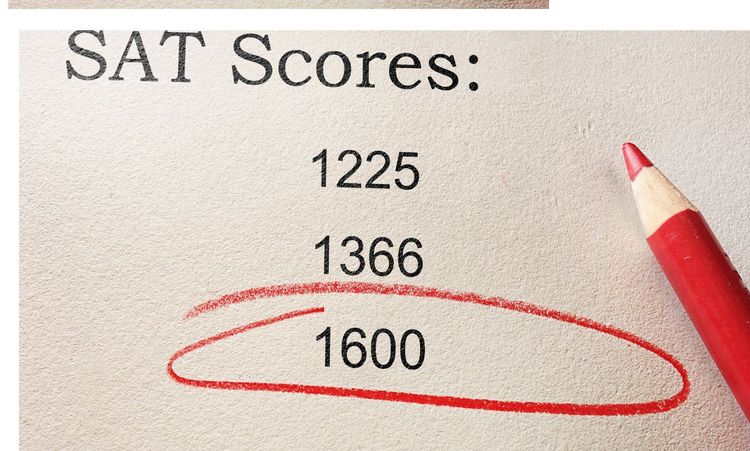The SAT isn't just another test—it's a gateway to your college dreams. Millions of students sit for this exam every year, but only those who master specific strategies excel. The difference between a good and a great score often comes from preparation strategy rather than pure intelligence. Many students make the mistake of thinking they can wing it. However, the SAT requires a different approach than regular school tests. It's designed to test critical thinking and problem-solving under pressure. Without proper strategies, even the brightest students can underperform. The good news? These strategies are learnable. You can significantly improve your scores and feel confident on test day with the right approach. Let's dive into why learning SAT strategies should be your top priority.
Manage Your Time Well
Time management separates successful test-takers from those who struggle. The SAT gives you a limited time to answer numerous questions, making every second count. Most students fail to finish sections not because they lack knowledge, but because they mismanage their time. Effective time strategies include pacing yourself throughout each section. For the Reading section, aim to spend about 13 minutes per passage. In Math, allocate time based on question difficulty rather than answering sequentially. Practice timing yourself during study sessions to build this crucial skill. Common time traps include spending too much time on a single question and not wearing a watch on test day. Learn to recognize when a question takes too long and make educated guesses. Remember, all questions carry equal weight regardless of difficulty.
Hire an SAT Tutor
Working with an experienced SAT tutor provides personalized guidance that generic study materials can't match. A skilled tutor identifies your weaknesses and tailors instruction to address them directly. They've seen countless students succeed and know precisely what works. Tutors offer accountability that self-study often lacks. They create structured study plans, provide practice materials, and offer feedback on practice tests. More importantly, they share insider knowledge about test patterns and question types that you might miss studying alone. When selecting a tutor, look for experience with recent SAT formats. The best tutors combine subject expertise with knowledge of test-taking strategies. Many students see score improvements of 100-300 points with dedicated tutoring, making this investment worthwhile for serious test-takers.
Have a Reading Passage Strategy
The Reading section challenges many students because it requires both comprehension and speed. Developing a consistent approach to passages ensures you extract key information efficiently. Start by reading the questions first to know what to look for while reading. Effective passage strategies include annotating as you read and identifying the author's primary purpose early. Many top scorers use the "chunk and check" method—reading a paragraph, then checking relevant questions before moving on. This prevents the need to reread entire passages. Different passage types require adjusted approaches. Historical documents need extra attention to context, while science passages often include data interpretation. Practice with various passage types to develop flexibility in your reading strategy.
Understand Your Biggest Opportunities
Strategic test preparation focuses on areas with the highest score improvement potential. Mathematical concepts like algebra and trigonometry offer significant point gains for students willing to review fundamentals. Similarly, grammar rules provide quick wins on the Writing section. Analyze your practice test results to identify where improvement yields the biggest returns. If you consistently miss certain question types, dedicate extra study time to those areas. Sometimes, fixing careless errors can boost your score by 50+ points without learning new content. Create a priority list based on your baseline score and target score. Focus intensively on your most significant opportunities while maintaining strengths in other areas. This targeted approach maximizes your study efficiency and score improvement potential.
Practice Effectively
Quality beats quantity in SAT preparation. Rather than taking practice tests after practice tests, focus on thoroughly reviewing mistakes and understanding underlying concepts. Effective practice includes timing yourself under realistic conditions and analyzing every incorrect answer. Develop a mistake journal to track error patterns. Categorize mistakes as content knowledge gaps, careless errors, or time pressure issues. This systematic approach helps you focus your study efforts where they'll have the most impact. Space out practice tests over your preparation period rather than cramming them at the end. Take full-length practice tests every two weeks, allowing time for review and skill-building between tests. Quality practice with careful analysis trumps rushed repetition every time.
Upgrade Your Math Techniques
Mathematics on the SAT requires both content knowledge and strategic thinking. Many students waste time using inefficient solution methods when faster techniques exist. Learn to recognize when to use mental math, estimation, or calculator shortcuts. For algebra questions, mastering the art of working backward from answer choices saves precious time. Geometry problems often have multiple solution paths—identify the quickest one before diving in. Advanced math topics like trigonometry appear less frequently but are worth reviewing for confident test-takers. Common math mistakes include calculation errors and misreading questions. Double-check your work when time permits, but trust your first instinct if pressed for time. Practice mental math regularly to increase your speed and accuracy on calculator-optional sections.
Identify and Overcome Your Weaknesses
Many students avoid their problem areas, but confronting these challenges head-on leads to breakthrough improvements. Create a detailed map of your strengths and weaknesses across all SAT sections. Address content gaps systematically rather than jumping between different topics. If vocabulary is your weakness, dedicate specific time blocks to word study using flashcards and context exercises. Work through problem sets for math concepts until the underlying principles become second nature. Overcoming weaknesses requires patience and persistence. Set realistic timelines for improvement—some areas may take weeks or months to master. Celebrate small victories along the way to maintain motivation through challenging study periods.
Manage Stress and Test Anxiety
Physical symptoms like sweating, rapid heartbeat, and mental blanks can derail months of preparation. Learning stress management techniques is as essential as content review for optimal performance. Practice deep breathing exercises and positive visualization before and during practice tests. Develop pre-test routines, such as light exercise or listening to familiar music, that calm your nerves. On test day, arrive early to minimize last-minute stress and bring all required materials. Mindset plays a massive role in SAT success. Reframe the test as an opportunity to showcase your preparation rather than a make-or-break event. Remember that the SAT is just one factor in college admissions, and poor performance doesn't define your potential.
Take Multiple Tests
Taking multiple practice tests under timed conditions builds stamina for the exam day. Use official College Board practice tests to ensure you practice with authentic materials. Space practice tests strategically throughout your preparation timeline. Start with diagnostic tests to establish baseline scores, then take full-length tests every two weeks. Review each test thoroughly before taking the next one to reinforce learning. Track your progress across multiple tests to identify trends and improvements. Some students experience score fluctuations due to test-day factors, so various data points provide a clearer picture of your abilities. Use practice test results to adjust your study plan as needed.
Conclusion
Learning SAT strategies represents an investment in your academic future. These techniques improve test scores and develop critical thinking and problem-solving skills valuable throughout college and beyond. The time you spend mastering these strategies pays dividends in confidence and performance on test day. Remember that SAT preparation is a marathon, not a sprint. Consistent practice with a strategic focus yields the best results. Start early, stay organized, and don't underestimate the power of proper preparation. Your SAT score opens doors to educational opportunities and scholarship possibilities. You're taking control of your college admissions journey by learning and implementing these strategies. Begin your strategic preparation today and watch your scores improve over time.




